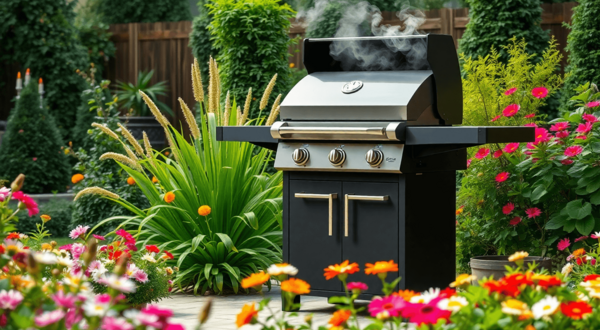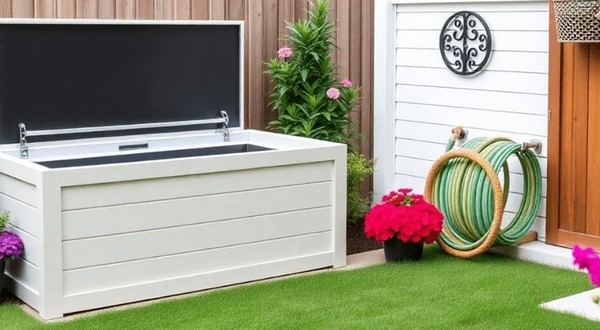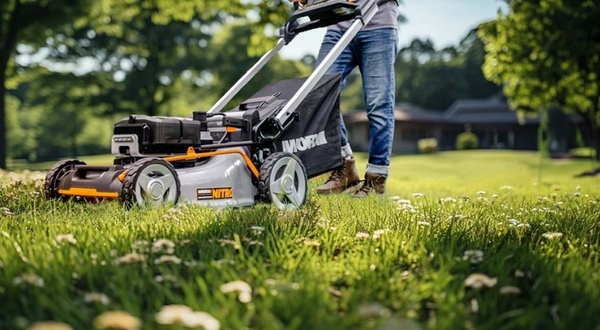
Finding the perfect BBQ grill can be tough, especially with the current market situation. New tariffs set by the US Federal Government have affected the prices and availability of many outdoor cooking products. As supply chains adjust, consumers may face temporary sales holds and increased costs.
This Grill Master Guide: Selecting the Perfect BBQ for Your Needs will help you navigate these challenges and make informed decisions about your backyard grilling setup.
In this guide, you will learn:
Understanding these elements ensures that you choose the best BBQ grill for your lifestyle, making outdoor cooking enjoyable and satisfying. Whether you’re a seasoned grill master or a beginner, this BBQ selection guide caters to all levels of grilling enthusiasts.
To help with your selection process, consider exploring Backyard Lifestyles, which offers a premium selection of outdoor patio products including high-quality barbecues.
When it comes to BBQ grills, the variety available can be overwhelming. Each type offers distinct advantages and disadvantages, catering to different cooking styles and preferences. Below is a detailed breakdown of the most common grill types, highlighting their unique characteristics.
Gas grills ignite quickly and heat up rapidly, making them ideal for spontaneous grilling. They offer precise temperature adjustments for better control during cooking and produce less smoke and ash compared to charcoal.
However, while gas grills are convenient, they lack the smoky flavor that many barbecue enthusiasts crave. Additionally, regularly replacing propane tanks can become an added expense and hassle.
Charcoal grills provide a rich, smoky flavor that enhances meats and vegetables. They can also reach higher temperatures, perfect for searing meats.
On the downside, lighting charcoal and waiting for it to reach the right temperature requires more time compared to gas grilling. Cleanup can also be messy and labor-intensive due to ash disposal.
Kettle grills are a popular variation of charcoal grills. Their design features a rounded lid that helps trap heat and smoke.
These grills are versatile, making them ideal for both direct and indirect grilling methods. They are generally more budget-friendly than other grill types as well.
However, their smaller size may not accommodate larger gatherings or big cuts of meat.
Pellet grills use wood pellets as fuel, combining the convenience of gas grilling with the flavor benefits of charcoal.
They excel at smoking meats while maintaining consistent temperatures, thanks to automatic feeders that make managing fuel levels simple during long cooks.
On the downside, initial investment costs can be higher than traditional grills. Additionally, pellet grills require electricity for operation, which may limit outdoor usage options in power outages.
Electric grills are perfect for urban dwellers or those with limited outdoor space. These grills plug into standard outlets and offer a simplified approach to grilling.
They are space-saving solutions ideal for apartments or small patios where traditional grilling may not be feasible. Minimal preparation and cleanup are required; simply plug in and start cooking.
However, electric models may not deliver the same depth of flavor as charcoal or wood-burning options. Furthermore, access to power sources outdoors may limit their usage.
Selecting the right grill largely depends on individual cooking preferences:
Understanding these various types equips you with the knowledge necessary to make an informed decision tailored to your lifestyle. Each grill type brings its own merits, ensuring there is something available for every grilling enthusiast.
Selecting the right BBQ grill involves understanding your unique cooking style, how frequently you plan to grill, and the space available in your outdoor area. These factors significantly influence your grilling experience and can help determine the most suitable grill for your needs.
First, consider how often you will use the grill. This assessment is crucial because it influences both the type of grill and its features.
Identifying the types of food you wish to prepare also plays an essential role. Different grills excel at specific styles:
Next, assess the size of the grill based on how many people you typically cook for. Hosting gatherings requires a different approach compared to cooking for just a few family members.
This consideration ensures that you can efficiently manage cooking times and keep everything hot without needing to rush.
The final factor involves evaluating your outdoor space. The dimensions of your patio or backyard will dictate what size and type of grill fits best. Think about:
Incorporating these elements into your decision-making process ensures a satisfying grilling experience tailored to your lifestyle and preferences. Understanding these factors sets the groundwork for selecting a BBQ grill that meets both functional needs and personal satisfaction.
Choosing the right BBQ grill involves understanding your budget. The price range varies significantly based on the type and features of the grill. Here’s a breakdown to help you navigate your BBQ grill budget.
Crafting a solid BBQ grill budget is crucial in selecting the perfect model tailored to your needs. Understanding price ranges and thoughtfully setting your budget will enhance the grilling experience while maintaining financial comfort.
When selecting a BBQ grill, evaluating additional features can significantly enhance your grilling experience. Key elements like side burners and built-in thermometers play crucial roles in functionality and cooking precision.
Side burners are an excellent addition for those who enjoy multitasking while grilling. They allow you to prepare side dishes, sauces, or even boil water for corn or other accompaniments without needing to head indoors. Consider the following benefits of side burners:
Choosing a grill with one or two side burners can elevate your outdoor cooking sessions, especially during larger gatherings.
Built-in thermometers are another important feature that can greatly improve your grilling results. These devices help maintain optimal cooking temperatures with ease. Benefits of having a built-in thermometer include:
Investing in a grill equipped with built-in thermometers supports not just better cooking but also peace of mind regarding food safety.
When evaluating BBQ grills, consider how these additional features align with your cooking style and preferences. Side burners promote efficiency while built-in thermometers enhance precision. These elements contribute to a more enjoyable and successful grilling experience, making them worth considering as you explore the market for the perfect grill for your backyard.
When selecting a BBQ grill, the material quality and construction play a crucial role in durability and performance.
Stainless steel grills have become increasingly popular due to their numerous advantages. Some key benefits include:
For instance, the Kenmore 4 Burner Gas Grill Plus Searing Side Burner, which is an all stainless steel model, exemplifies these benefits with its spacious design and high-quality cooking grids.
While other materials such as cast iron or aluminum can also be effective, they may not provide the same level of longevity or ease of maintenance.
Safety is paramount when it comes to grilling. Certain features can enhance safety during operation:
Investing in a grill that incorporates these safety features ensures a secure and enjoyable cooking experience.
Selecting the right material and understanding essential safety features are crucial steps in choosing the best BBQ grill for your backyard. Prioritizing high-quality construction not only enhances cooking performance but also contributes to long-term satisfaction with your outdoor cooking setup.
The world of BBQ supplies has seen significant changes due to recent economic factors. The US Federal Government has imposed tariffs on imported BBQ products, affecting both pricing and availability. Understanding these challenges is crucial for making an informed purchase decision.
Navigating these challenges requires careful consideration when selecting a grill. As you explore the Grill Master Guide: Selecting the Perfect BBQ for Your Needs, staying informed about market conditions ensures you make a choice that balances quality and cost-effectiveness. Being aware of the impact of tariffs will empower you as a consumer in your quest for premium outdoor living products.
Finding the right grill is a journey that should reflect your unique cooking style and outdoor lifestyle. Here’s a perfect BBQ selection summary to guide your choices:
Your journey to becoming a Grill Master starts with informed decisions. Each grill type offers distinct advantages that cater to various preferences and cooking styles. Embrace the opportunity to explore different options available on the market.
Understanding key factors such as material quality, construction, and innovative features will enhance your grilling experience.
This Grill Master Guide: Selecting the Perfect BBQ for Your Needs empowers you to make choices tailored to your lifestyle. Enjoy the process of selecting a grill that complements your backyard gatherings and enhances culinary adventures. Enjoy grilling!


